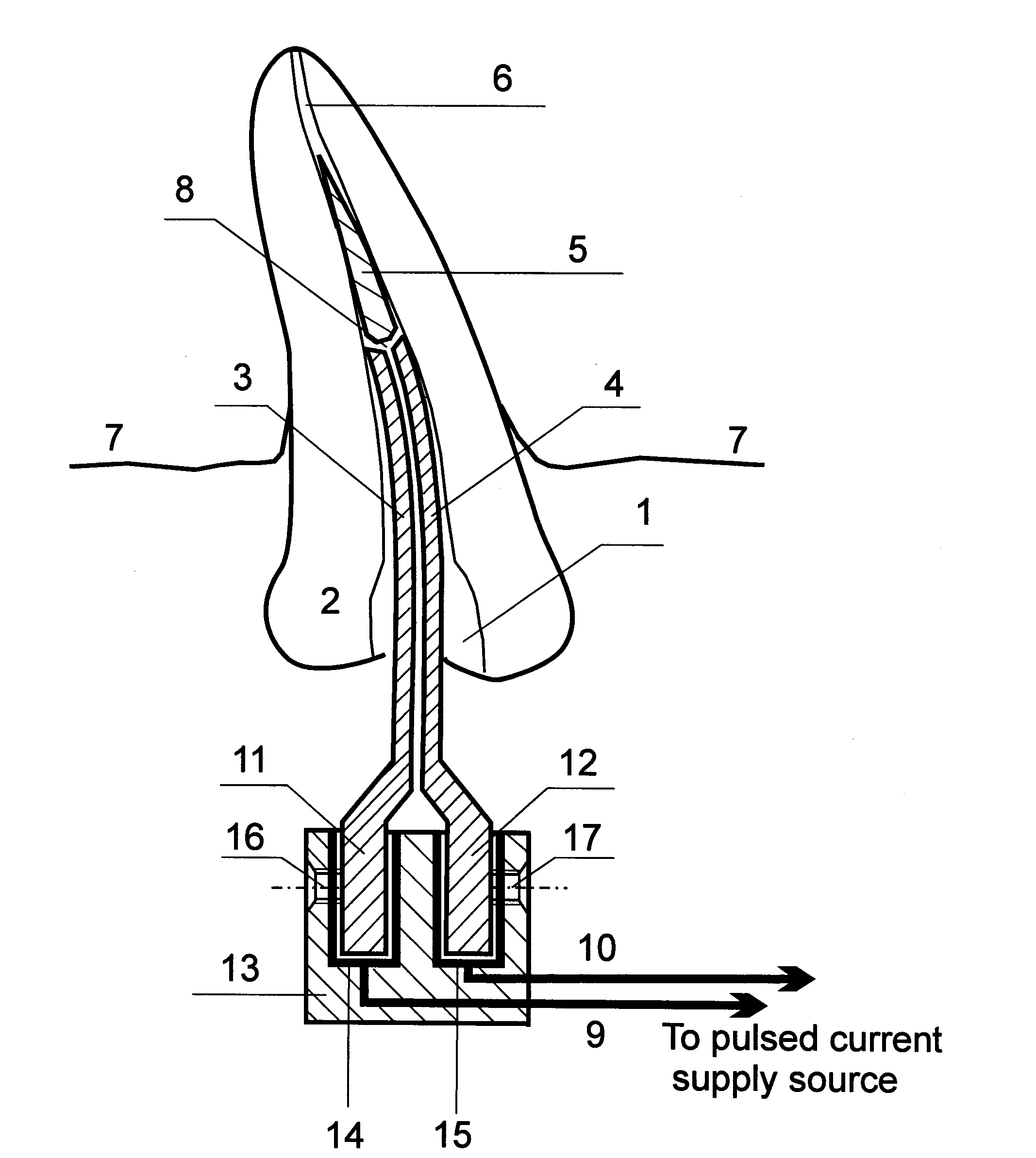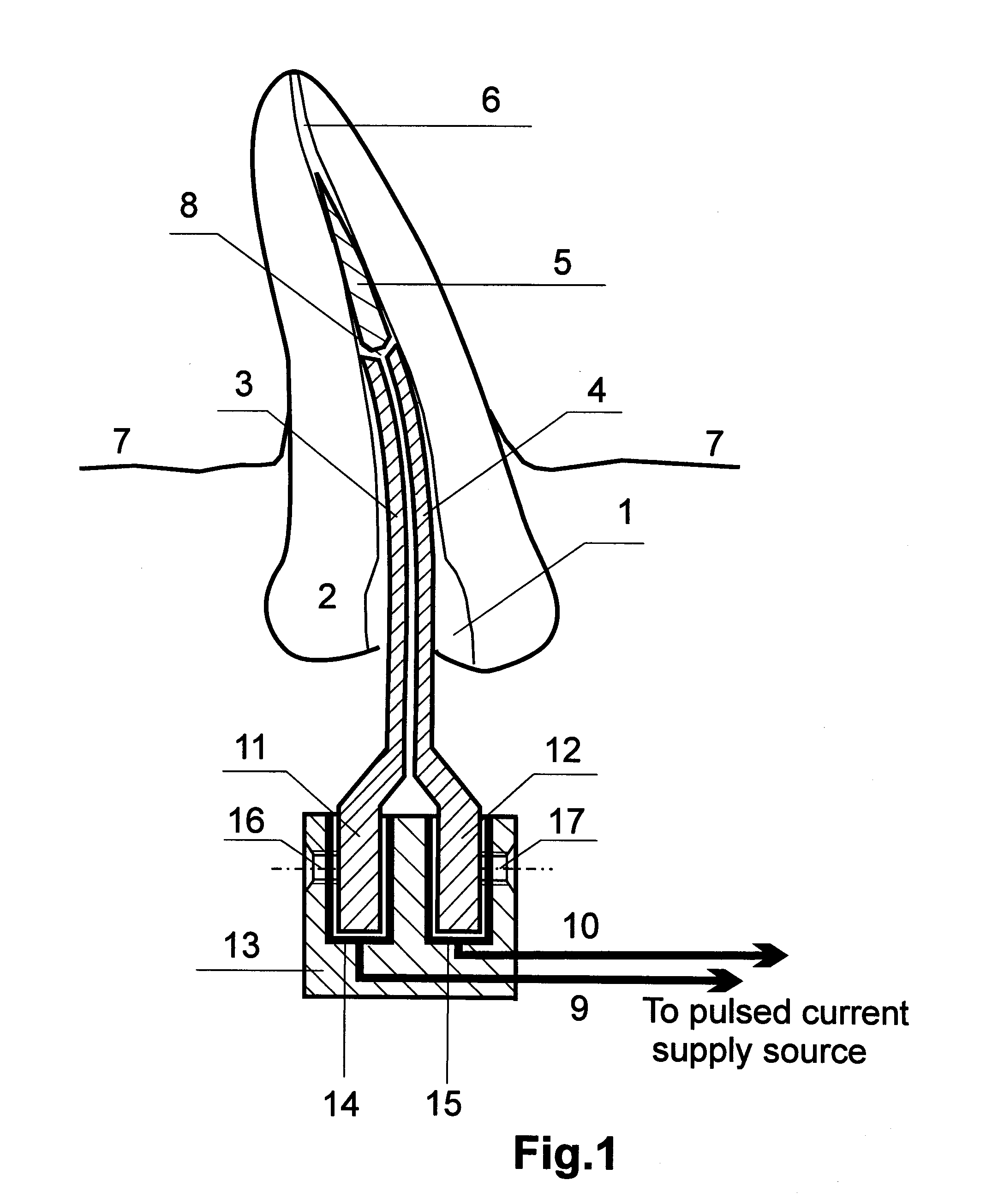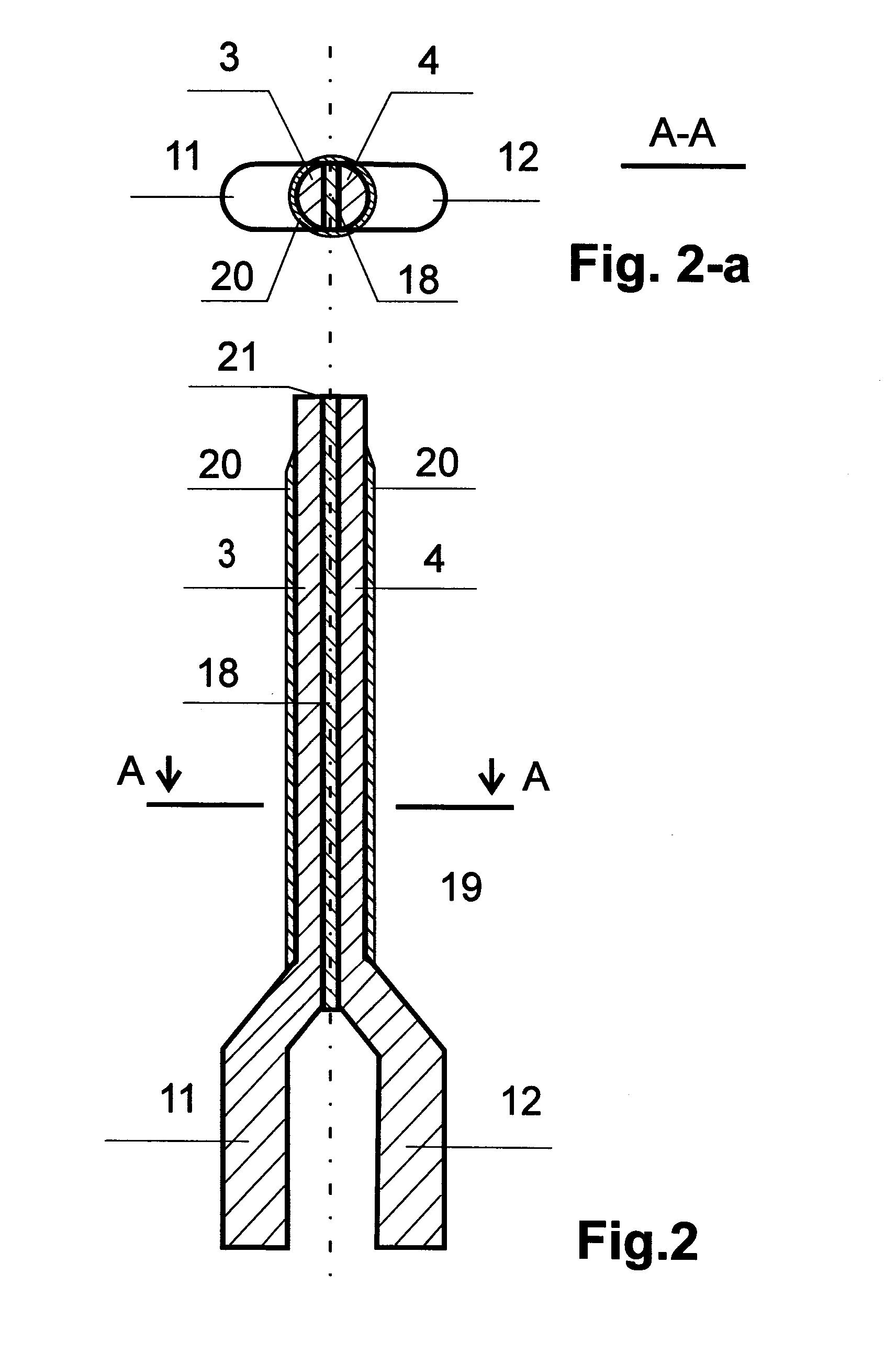Method for removing a tool fragment from a tooth root canal and an extractor for carrying out said method
a tooth root canal and extraction method technology, applied in the field of dentistry, can solve the problems of inability to complete endodontic treatment of the tooth with the removal of infected tooth tissues, the fragments of instruments can suffer sudden breakage, and the inability to complete endodontic treatment of the tooth, etc., to achieve the effect of optimal attachment strength
- Summary
- Abstract
- Description
- Claims
- Application Information
AI Technical Summary
Benefits of technology
Problems solved by technology
Method used
Image
Examples
Embodiment Construction
[0033]The method suggested for extraction of a metal instrument fragment from the tooth root canal is explained in FIG. 1. It comprises an introduction through the entry 1 into the root canal of the tooth 2 of two insulated electrodes 3 and 4 until they contact instrument fragment 5, which got stuck, for example, in the apical (upper) section 6 of the root canal. Then electric current impulse is furnished to the circuit formed, in series, by the electrode 3, fragment 5 and electrode 4 providing a micro-welding of the fragment 5 to the electrodes 3, 4 due to a local heating at contacting points. Afterwards, the electrodes 3, 4 are extracted from the tooth 2 together with attached fragment 5. The level of gum near the tooth is shown schematically by the line 7. Position of the instrument fragment 5 in the apical section of the root canal 6, as well as, in some cases, its configuration face in the direction to entry 1 of the root canal are determined in the course of a radiographic exa...
PUM
 Login to View More
Login to View More Abstract
Description
Claims
Application Information
 Login to View More
Login to View More - R&D
- Intellectual Property
- Life Sciences
- Materials
- Tech Scout
- Unparalleled Data Quality
- Higher Quality Content
- 60% Fewer Hallucinations
Browse by: Latest US Patents, China's latest patents, Technical Efficacy Thesaurus, Application Domain, Technology Topic, Popular Technical Reports.
© 2025 PatSnap. All rights reserved.Legal|Privacy policy|Modern Slavery Act Transparency Statement|Sitemap|About US| Contact US: help@patsnap.com



